



Philippines Trade Update: Exports momentum continues
 DOWNLOAD
DOWNLOAD

Quarterly Economic Growth Release: More BSP cuts to come
 DOWNLOAD
DOWNLOAD

Monthly Economic Update: Fed catches up
 DOWNLOAD
DOWNLOAD


Banks’ assets climb nearly 8% to PHP23T as of end-July

The Philippine banking sector’s total assets as of end-July rose by 7.9% from a year ago, amid the continued growth in loans and deposits.
Preliminary data from the Bangko Sentral ng Pilipinas (BSP) showed banks’ assets reached PHP 23.09 trillion as of July from PHP 21.4 trillion a year ago.
“The latest year-on-year growth in banks’ assets or total resources may be attributed to the growth in bank loans, as well as the continued growth in deposits that partly fund banks’ loans,” Rizal Commercial Banking Corp. Chief Economist Michael L. Ricafort said.
Banks’ assets are mainly supported by deposits, loans, and investments. These include cash and due from banks as well as interbank loans receivable (IBL) and reverse repurchase (RRP), net of allowances for credit losses.
The banking industry’s total loan portfolio inclusive of IBL and RRP went up by 8.8% to PHP 12.36 trillion as of end-July from PHP 11.36 trillion in the comparable year-ago period.
Net investments — or financial assets and equity investments in subsidiaries — rose by 9.6% to PHP 6.83 trillion from PHP 6.23 trillion a year ago.
However, cash and due from banks declined by 10.4% to PHP 2.48 trillion in the first seven months of 2023 against PHP 2.77 trillion last year.
Net real and other properties acquired (ROPA) inched up by 4.7% to PHP 105.1 billion from PHP 100.32 billion in the same period in 2022.
Other assets stood at PHP 1.31 trillion, rising by 38% from PHP 941.249 billion last year.
Meanwhile, the total liabilities of the banking system increased by 7.2% to PHP 20.17 trillion in the first semester from PHP 18.8 trillion in the comparable year-ago period.
“The continued profitability of banks may have also added to the growth in capital and total assets,” Mr. Ricafort said.
Based on the latest data from the BSP, the cumulative net income of the banking system grew by 24.7% to PHP 178.51 billion as of June from PHP 143.12 billion in the same period in 2022.
Mr. Ricafort also said some banks raised additional capital from the financial markets and strategic investors that boosted the lenders’ finances. This enabled them to extend more loans and make other investments, which boosted their balance sheet.
By banking group, universal and commercial banks had PHP 21.69 trillion of total assets as of the end of July, while the thrift banks accounted for PHP 950.28 billion.
As of the first quarter of 2023, the BSP counted 45 big banks, 43 thrift banks, and 395 rural and cooperative banks under its supervision. Last year, the BSP approved six digital banks under a new bank category.
BDO Unibank, Inc. has the highest number of total assets in Philippine banks, which stood at PHP 3.92 trillion in the first quarter. This was followed by Land Bank of the Philippines with PHP 3.11 trillion, and Bank of the Philippine Islands with PHP 2.66 trillion.
Other lenders in the BSP’s top 10 in terms of asset size are Metropolitan Bank and Trust Co., Rizal Commercial Banking Corp., Philippine National Bank, Development Bank of the Philippines, Union Bank of the Philippines, and Security Bank Corp.
“For the coming months, the economic reopening narrative would still sustain the growth in banks’ loans despite higher interest rates,” Mr. Ricafort said.
The Monetary Board raised borrowing costs by 425 basis points, bringing the target RRP rate to 6.25%.
A poll conducted last week showed 14 of 17 analysts expect the board to further extend its policy hold on Thursday, Sept. 21. – Keisha B. Ta-asan
This article originally appeared on bworldonline.com





 By BusinessWorld
By BusinessWorld